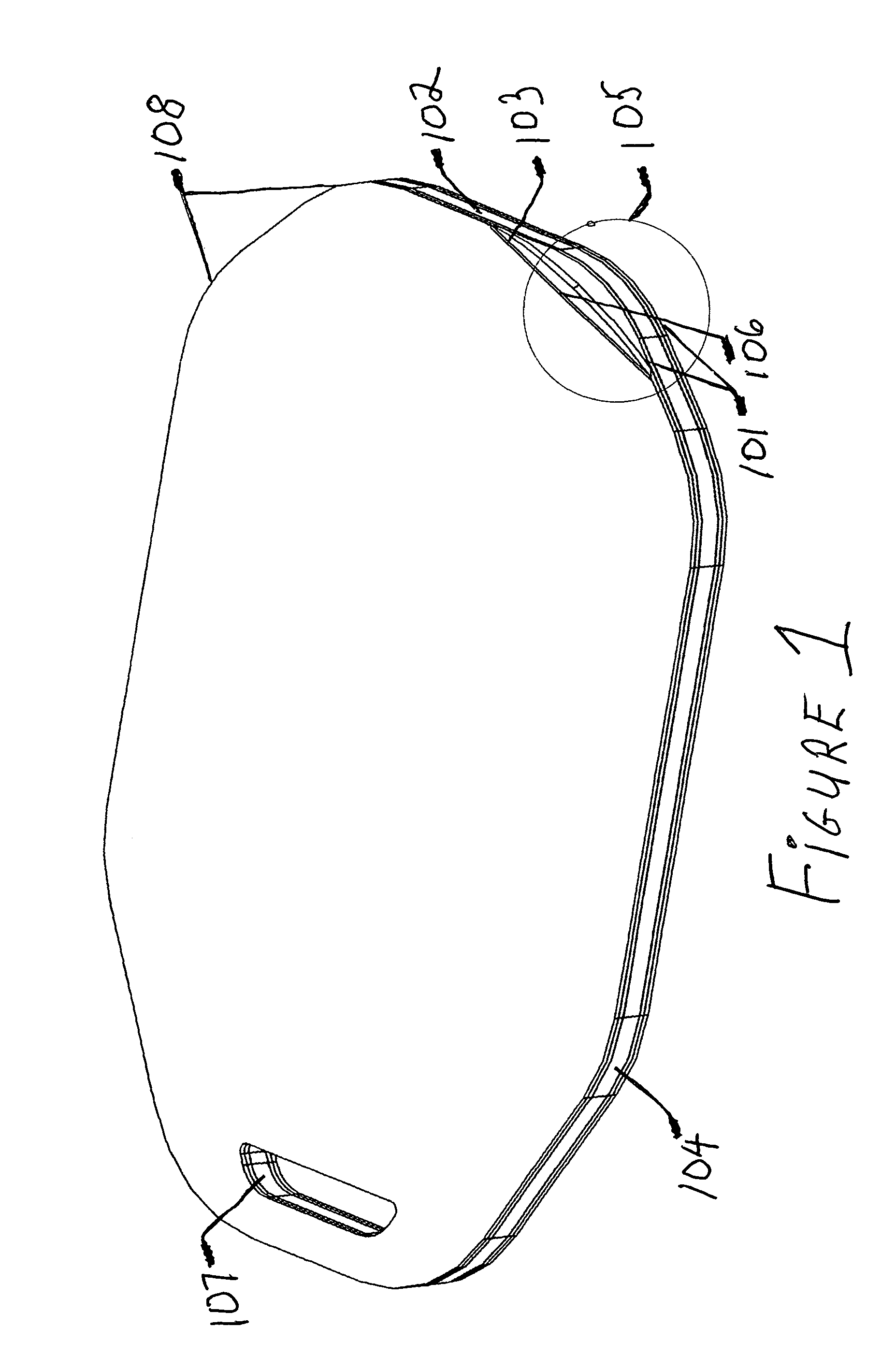Cutting board apparatus
a cutting board and apparatus technology, applied in the field of multi-layered cutting boards, can solve the problems of time-consuming and cumbersome process, nicks, gouges, and difficulty in using conventional cutting boards, and achieve the effects of reducing seams, crevices and gaps, reducing labor intensity, and increasing cutting board li
- Summary
- Abstract
- Description
- Claims
- Application Information
AI Technical Summary
Benefits of technology
Problems solved by technology
Method used
Image
Examples
Embodiment Construction
[0027]The present invention is directed to a multi-layered cutting board assembly wherein individual layers can be removed from the assembly and discarded as their cutting surfaces become damaged or exhausted. The disclosed cutting board assemblies include a plurality of material layers stacked and removably adhered to one another. Each of the plurality of layers generally has opposed planar surfaces. An overall thickness of the cutting board assembly is defined by the combined thicknesses of the plurality of material layers. At least one of the opposed surfaces on each of the material layers defines a potential cutting surface. Each of the plurality of material layers is sequentially removable beginning with an outermost layer from the cutting board assembly to expose fresh potential cutting surfaces on a next cutting layer. Depending on the particular embodiment of the cutting board assembly, a fresh potential cutting board surface may be any exposed planar surface of the remainin...
PUM
| Property | Measurement | Unit |
|---|---|---|
| temperatures | aaaaa | aaaaa |
| size | aaaaa | aaaaa |
| shape | aaaaa | aaaaa |
Abstract
Description
Claims
Application Information
 Login to View More
Login to View More - R&D
- Intellectual Property
- Life Sciences
- Materials
- Tech Scout
- Unparalleled Data Quality
- Higher Quality Content
- 60% Fewer Hallucinations
Browse by: Latest US Patents, China's latest patents, Technical Efficacy Thesaurus, Application Domain, Technology Topic, Popular Technical Reports.
© 2025 PatSnap. All rights reserved.Legal|Privacy policy|Modern Slavery Act Transparency Statement|Sitemap|About US| Contact US: help@patsnap.com



